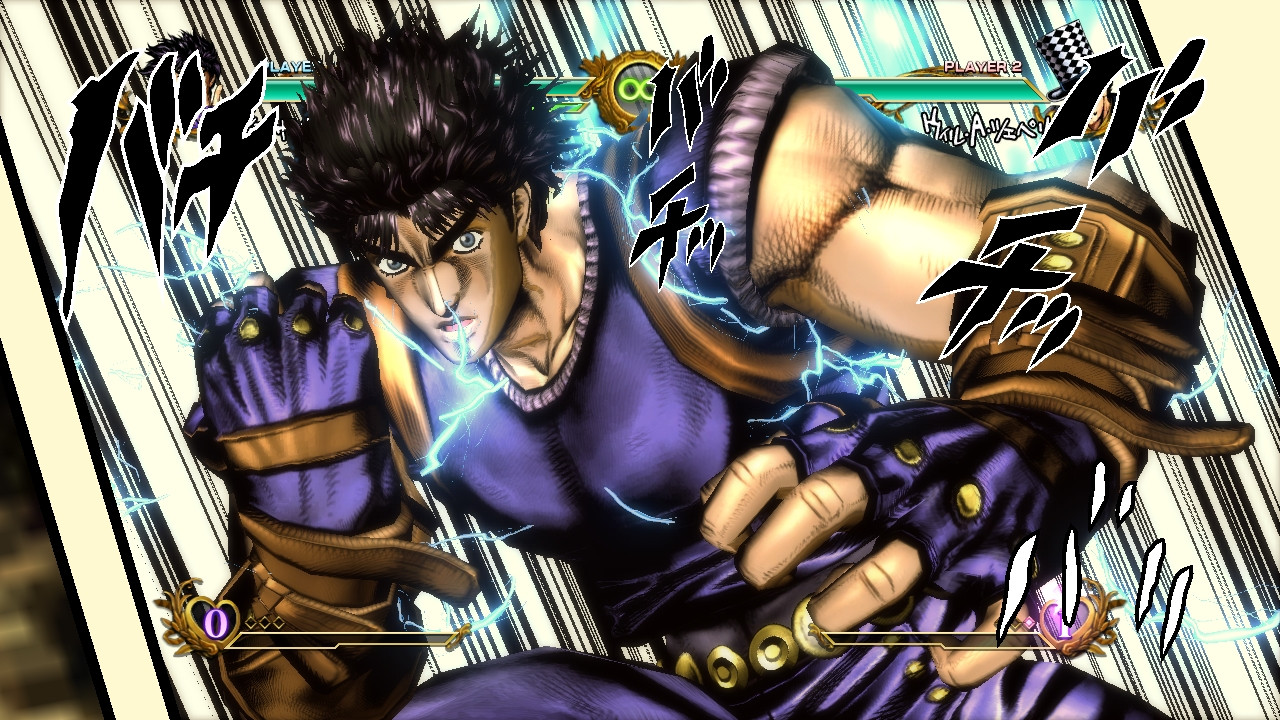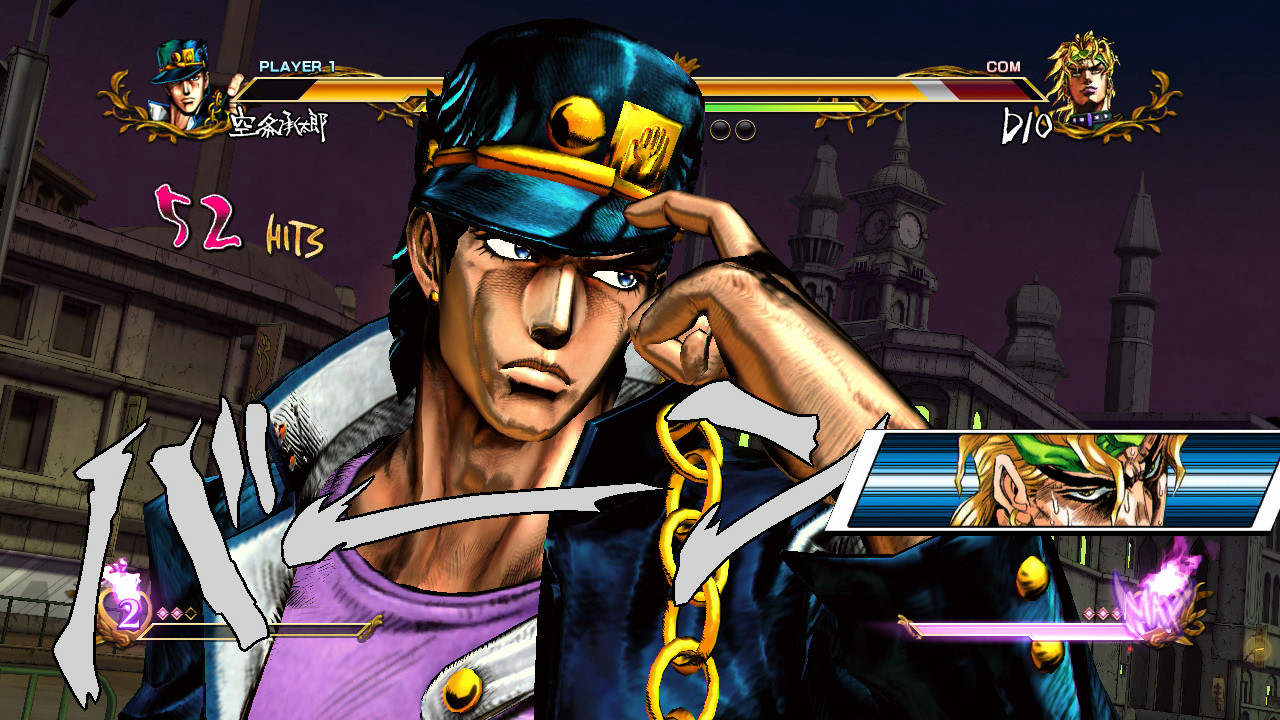JoJo’s Bizarre Adventure All-Star Battle Review: Gold-Plated Experience
Very few franchises in Japan carry as much weight and influence as the popular manga known as JoJo’s Bizarre Adventure. While it’s received little official spotlight in the west, the series has been huge in Japan for over 25 years. JoJo’s Bizarre Adventure: All-Star Battle was announced to coincide with the 25th anniversary in 2012, and released as a PlayStation 3 exclusive. The fighting game is developed by CyberConnect2 (the developers behind the Naruto Ultimate Ninja and .Hack games) and published by Bandai Namco Games. In a surprise announcement, it was confirmed All-Star Battle would be receiving an international release, although some character names would be changed to avoid legal issues (Hirohiko Araki, the series creator, has named quite a few characters after music references over the years). It’s been nearly a year since the original Japanese release, but now fans can get their hands on the game without having to import it, and now it’s time to find out if it was worth the wait.
Combat is performed primarily with the Light, Medium, and Heavy attack buttons, in which players use normal and special attacks to fill up their super meter (referred to as the HH Gauge in this game). Also, like most fighting games, players can use portions of the meter to perform devastating super attacks. While movement is normally akin to standard 2D fighters, the game also has a sidestep button which allows players to dodge attacks in addition to jumping or blocking. One of the key components to the combat, however, is the use of the special button, which changes depending on which fighting style each character uses. For instance, Hamon characters can charge their HH Gauge in addition to letting it build up normally when hitting/getting hit, or power up some of their special attacks for the cost of some meter. The Vampirism style allows for stealing the opponent’s HP or HH Gauge, while the Mode style lets players gradually decrease their meter to boost the overall performance. Most characters in the game fall under the Stand style, in which pressing the special button summons their Stand (a physical manifestation of power that can fight alongside a character, changing their normal and special attacks while the Stand is activated). Finally, Mounted characters can call a horse into and out of the fight for assistance and increased mobility, assuming players don’t knock them off the horse.
Now as to how the combat itself runs, it’s a little bit on the slow side. Slow enough where some people might not care for it. Other fighting games handle speed better than All-Star Battle and for those who are just looking for the most polished fighting game may want to look elsewhere. However the gameplay itself, while not the best of the genre, can still be enjoyable. This is especially true for those who are a fan of the manga. The game is loaded with references during a match, and fanservice to the source material is by far the strongest thing All-Star Battle has going for it. Attacks, taunts, super attacks, stage hazards (which can be turned off if players don’t want want any interference in their fights), and dramatic finishes were taken from the manga (A dramatic finish is when under certain conditions players KO the opponent and a bonus cut-scene triggers upon their defeat). This is what makes the game stand out in the genre, and will most likely keep fans coming back.
In terms of gameplay modes, players first have the main staples of just about the entire fighting game genre. Arcade mode comes first (and strangely wasn’t even in the original Japanese version, it’s only in the international release), and works mostly as expected. Fight 8 opponents back-to-back and get gold for effort, which can be spent on unlocking items in the gallery. However sometimes Arcade mode will be upgraded to Harvest mode where the gold payout can increase by a large amount. There’s also training mode where players can hone their skills and practice their combos. There’s also versus mode, with both offline and online options. Online doesn’t exactly have the best netcode backing it, as sometimes players can get matches with pretty solid connections while others have a pretty nasty amount of lag. There’s also no proper lobby system here. Players can play matches with a friend and rematch them online even like most games, but a full-on lobby to house more players isn’t included, and as a result the online can be a bit underwhelming. It’s also worth noting that Japanese copies of the game cannot play with international release versions online.
There’s also Story mode, which allows players to fight through a basic version of the overall series plot. This is also the mode that unlocking characters is tied to. Players can jump into the story of any of the 7 completed parts of the manga (Phantom Blood, Battle Tendency, Stardust Crusaders, Diamond is Unbreakable, Vento Aureo, Stone Ocean, and Steel Ball Run) in whatever order they choose and unlock characters from that part. Clearing all 7 of those unlocks some additional content too. The presentation in this mode is a bit lacking, as it’s just a background based on the part that’s playing with narrated text, either from the narrator or a character speaking. There’s no proper cut-scenes, not even a visual novel style similar to Persona 4 Arena or the BlazBlue series. Just text on background. It should go without saying but for those who are just getting acquainted with the series with the ongoing anime, be careful as this mode contains quite a few key spoilers from the entire series (which is to be expected since the goal of the mode is to tell the plot).
Finally, there’s Campaign mode, where players can unlock character taunts, additional dialog and sound effects, new win poses, and costumes. This mode requires connecting to PSN to play, as it has some pretty rough Free-to-Play game elements in it. To fight in this mode, players need to pay one energy cell from their meter (said meter holds 10 cells max, and each cell can recharge in 2 minutes). Some instances allow players to pay more cells for bonus effects or to deal more damage to “boss” characters, who drop a lot of these customizing parts. Unlocking these items for characters can be somewhat grind-ish due to how players usually have to fight a boss multiple times to unlock the best parts, but it used to be even worse. The original Japanese release would require hours to restore the energy meter to maximum, and as such players would be encouraged to buy items with real money to restore the meter. These items are still in the international release, but players can easily recover a cell within the time span of a fight. As such it’s not anywhere near as bad as before, but it’s still something that shouldn’t even be in a full, paid game anyways.
The bottom line is that this game is meant for the fans of the series. Fighting game fans looking for something new may not find what they’re looking for with this title. Other games definitely handle speed and combat better, but what’s here can still be enjoyable to the right crowd. As mentioned before, fanservice is king here. The attention to detail the game handles in response to the manga is top notch. The game may not be as fast or fun as the previous JoJo’s fighting game made by Capcom, but what’s here can definitely be enjoyed by the right audience. All-Star Battle is a decent fighter, but a great JoJo’s game. If only it could have had a little more polish in the combat itself, better online functionality, and no “Free to play” nonsense.




Responses